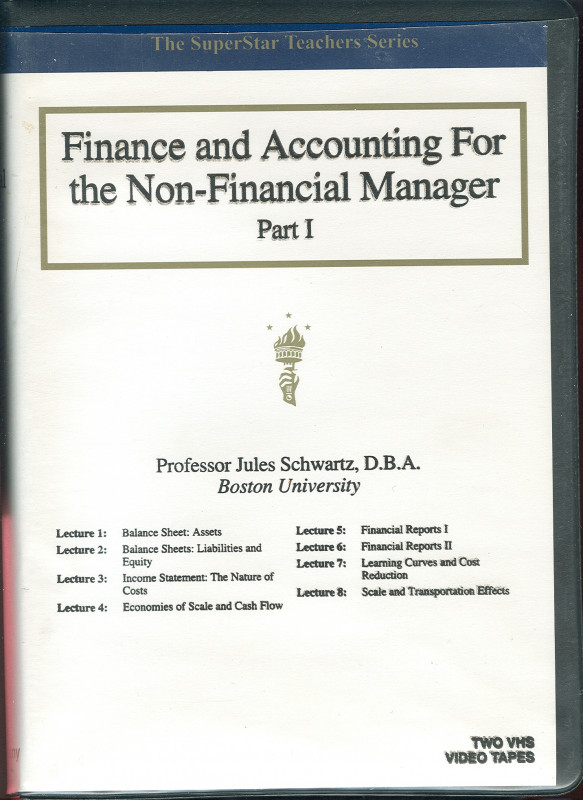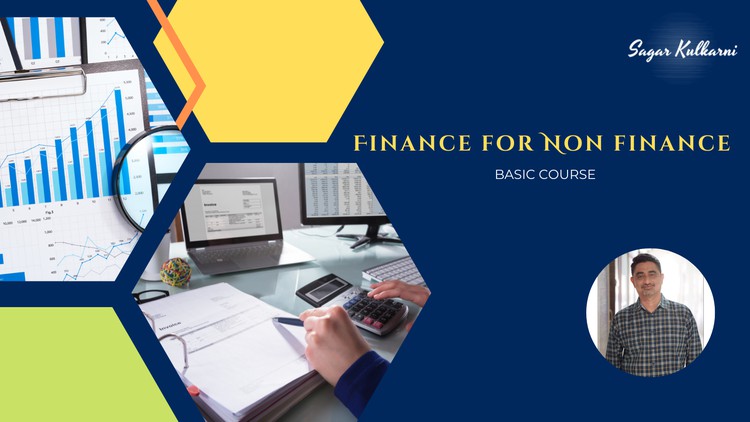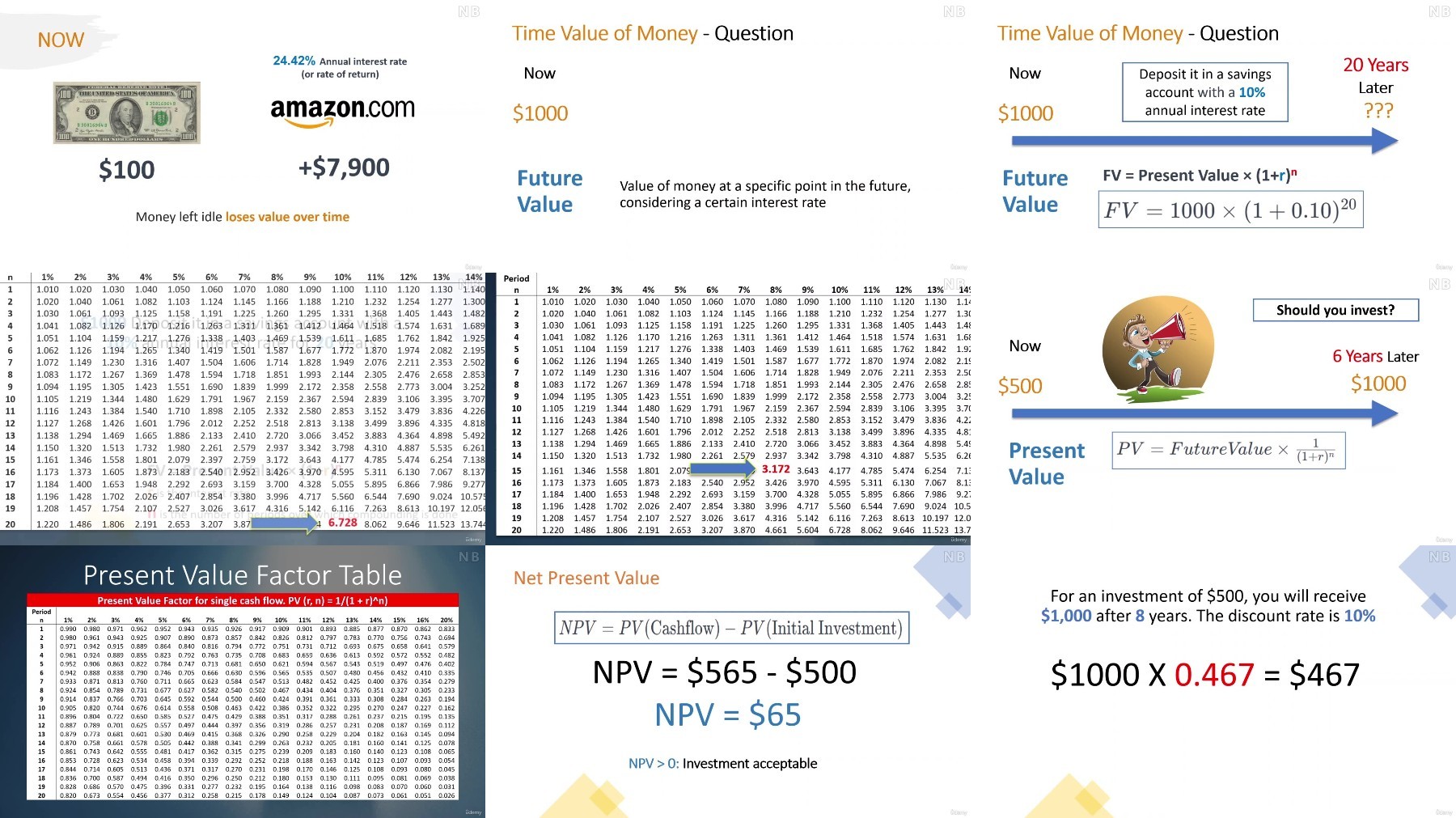
Finance and Accounting for the Non-Financial Manager [TTC Audio]
English | 1996 | 11 hrs and 49 mins | MP3 | 317 MB
Finance and Accounting for the Non-Financial Manager
(16 lectures, 45 minutes/lecture)
Course No. 533
Taught by Jules Schwartz
Retired, Boston University
Ph.D., Harvard University
In 1494, a Franciscan monk and professor of sacred theology in Venice wrote the first textbook of modern accounting.
Five centuries later, businesspeople the world over, American or Italian, Japanese or Nigerian, still speak the fundamental language of business created by Luca Pacioli.
Investors, business owners, and managers have always had a deep need to become fluent in the lexicon of accounting and finance.
Understanding the Language of Profit Is Now Essential
But as firms catch the wave of open-book and profit-share management, everyone who works at these firms now needs to become proficient in the language of profit.
If you are in any of these groups, there are key concepts you need to understand, including:
income statements
balance sheets
cash flow analysis
net present value
debt-to-equity ratios
the vast differences between profits and cash
the host of financial measurements that constitute the bottom line.
Accessible, Useful, and Fun to Learn
This course is designed to teach you those concepts in a way that is accessible, immediately useful, interesting, and in the hands of teacher Jules Schwartz even fun.
Professor Schwartz's varied and successful background in business, investment banking, and academics includes being the recipient of Boston University's Metcalf Prize for distinguished teaching, making him an ideal choice to teach this course.
His lectures are illustrated with computer-generated graphics to display financial statements, definitions, formulas, and equations.
One concept at a time, he clearly explains many of the crucial aspects of the world of business and how they are connected to one another, ranging from the balance sheet to debentures, from the learning curve to the Lang effect.
And to ensure that you master each type of business problem covered in the lectures, the outline booklet that accompanies the course includes example problems and their solutions.
Lecture by lecture, you gain fluency in the language of accounting.
And you also add a vital dimension to your understanding as you learn to see how the numbers from a financial statement impact a firm's strategy, growth, and sources of revenue to pay for its activities.
Lecture 1: Balance Sheet: Assets
This first lecture introduces the balance sheet, or statement of a company's condition.
Professor Schwartz explains this "snapshot" of a company's assets and offers an explanation of where funds come from to buy these assets.
Lecture 2: Balance Sheet: Liabilities and Equity
This lecture discusses the sources of investment funds open to a company. You learn the advantages and disadvantages of debt and equity financing.
Lecture 3: Income Statement: The Nature of Costs
This lecture explores the income statement, a report on the profit results for the accounting period. You examine how the nature of cost influences both results and financial decisions.
Lecture 4: Economies of Scale and Cash Flow
You learn how to approach what is an important goal for every business: maximizing the amount of cash it generates relative to the amount it has invested.
Lecture 5: Financial Reports I
In a two-lecture lesson on financial reports, you get a chance to examine a real report in detail as Professor Schwartz unveils the 1972 Annual Report of the United States Steel Company.
As you go through the numbers, you gain an understanding of both the level of precision you can expect in such information and the degree of discretion management exercises in presenting information to its shareholders.
Lecture 6: Financial Reports II
This lecture continues the examination of the U.S. Steel Annual Report by explaining how this firm may have increased reported earnings by $80 million through its discretionary decisions.
Lecture 7: Learning Curves and Cost Reduction
Professor Schwartz examines some of the factors that influence costs. You also learn about the phenomenon called the "learning effect" and how it can create strategic opportunities.
Lecture 8: Scale and Transportation Effects
You learn more about two other cost factors that significantly affect the decisions of a company: scale and transportation costs.
Lecture 9: Financial Decisions
Companies invest money today to realize returns tomorrow. This lecture teaches you how to deal with the concept of present value and the discounting of any expected future payments.
Lecture 10: The Costs of Capital
What is the price a firm must pay for the use of the funds provided to it by its creditors and shareholders? You learn that the weighted average of these costs is the corporation's cost of capital.
Lecture 11: Return on Sales, Assets, and Equity
In this lecture, you consider the three traditional measures of corporate performance:
return on sales
assets
equity.
You learn that no single criterion is sufficient. They are all related, and different standards apply at different levels in the company.
Lecture 12: Financial Limits of Growth
You learn how to develop a formula that defines the maximum rate at which a company is likely to grow. You also learn how growth, an important measure of corporate performance, is directly related to its return on equity.
Lecture 13: Strategic Signatures Case I
You get a chance to examine the financial data of 10 well-known American companies. Your task is to match the data to the right company.
This exercise gives you an opportunity to apply many of the concepts previously learned in order to determine what each company should look like.
Lecture 14: Strategic Signatures Case II
In this lecture, you use the strategy definitions derived for the 10 companies in the Strategic Signatures Case I, along with the strategic variables you will have defined, to determine which set of financials belongs to which company.
You see that accountants do a reasonably good job of describing each company in financial terms, despite, in Professor Schwartz's words, "the limitations of their craft and the odd results one expects to see within Generally Accepted Accounting Principles."
Lecture 15: Measuring and Controlling
Professor Schwartz explores additional uses of accounting data and financial analysis. You learn about some of the problems inherent in measuring the performance of people and units.
Lecture 16: Legal Issues and Summary
To conclude the course, Professor Schwartz considers some of the regulatory issues that influence management's financial policies and examines the rules applying to patents, trademarks, and copyrights. You also look at the laws that govern competition.
Available on Videotape
The course is only available on videotape. Professor Schwartz s lectures are richly illustrated with hundreds of computer-generated graphics to display financial statements, definitions, formulas, and equations. Several example problems are included in the outline booklets accompanying the course.
Course Lecture Titles
Tape 1:
Lecture 1-Balance Sheet Assets
Lecture 2-Balance Sheets Liabilities and Equity
Lecture 3-Income Statement The Nature of Costs
Lecture 4-Economies of Scale and Cash Flow
Tape 2:
Lecture 5-Financial Reports I
Lecture 6-Financial Reports II
Lecture 7-Learning Curves and Cost Reduction
Lecture 8-Scale and Transportation Effects
Tape 3:
Lecture 9-Financial Decisions
Lecture 10-The Costs of Capital
Lecture 11-Return on Sales, Assets, and Equity
Lecture 12-Financial Limits of Growth
Tape 4:
Lecture 13-Strategic Signatures Case I
Lecture 14-Strategic Signatures Case II
Lecture 15-Measuring and Controlling
Lecture 16-Legal Issues and Summary
The lecturer:
Jules Schwartz
Retired, Boston University
Ph.D., Harvard University
Recently retired, Jules J. Schwartz was Professor of Management and Professor of Engineering in the School of Management at Boston University.
Professor Schwartz did his undergraduate work in mechanical engineering and received his M.B.A. degree at the University of Delaware. He is a graduate of the Industrial College of the U.S. Armed Forces and the U.S. Air Command and General Staff College. He earned his Ph.D. from the Harvard Business School, Harvard University.
Prior to taking his position in Boston, Professor Schwartz was Assistant Dean and Associate Professor of Management at the Wharton School of the University of Pennsylvania. He also has 15 years of program management experience with Sperry Rand, Westinghouse Electric, and Thiokol Chemical Corporation, and he was credited with six U.S. patents. Before he began his career as a professor of business studies, he was, in fact, a rocket scientist.
At BU, Professor Schwartz received the prestigious Metcalf Award for Excellence in Teaching.
Professor Schwartz s research interests include business policy, technological innovation, and corporate finance. He has conducted executive programs in management policy and finance throughout the United States, Europe, and Asia. He is the author of Corporate Policy: A Casebook.
Rpped:
MP3-MPEG-LAYER-3
Sample Rate 48khz-DVD Quality
Stereo
BITRATE 56kbps
RiverPast AudioConverter Pro version 6.1
Rip anonymous








